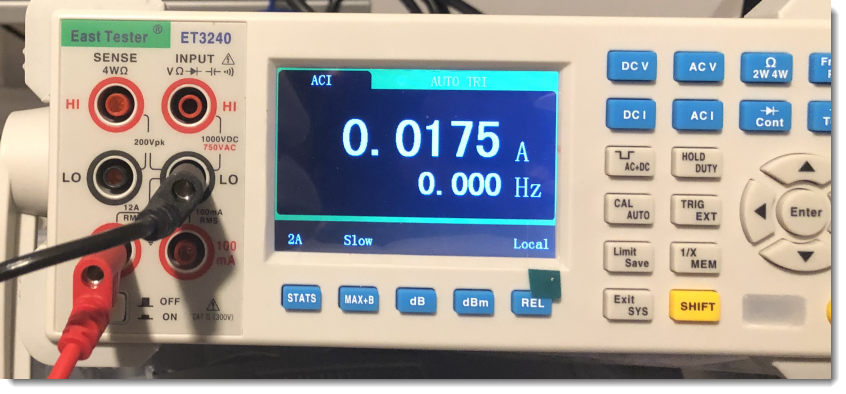A Philips Hue lamp is a LED lamp that can be controlled wirelessly. It always draws power for its control circuitry, also when the LED is turned off.
I wondered how much power it consumes in the off state. Doing some research, I found a couple of forums where people asked the same question, and getting answers that is was very little, varying from 0,01 A to 0,02 A.
I got similar results for the current when I measured this:

But I wanted a more precise answer, and not only the current. I am more interested in the power (Watt) consumption. As our domestic electricity meters measure real power over a period of time.
Thus I measured the power consumption of a 1100 Lumen color Philips Hue lamp that I had switched of via the smartphone app over a period of 10 days.

And these are the numbers I got after 10 days:

0,07756 kWh over a period of 10 days, that’s 0,32316 W. Notice that the display indicates KWh, but that should be kWh (lowercase k for kilo).
Extrapolating to a whole year, that’s 2,831 kWh. Which in my case, correspond to a cost of €1,50 (roughly speaking) per lamp per year.
With online numbers claiming the current to be between 0,01 A and 0,02 A, at first I expected the power consumption to be higher. But the power factor is quite low (around 0,10), explaining a lower power consumption.
Update 2022/09/01: I redid the test for one day (24 hours) using a more precise powermeter (GPM 8310) and measured 8,9188 Wh for 24 hours, or 0,3713 W.
